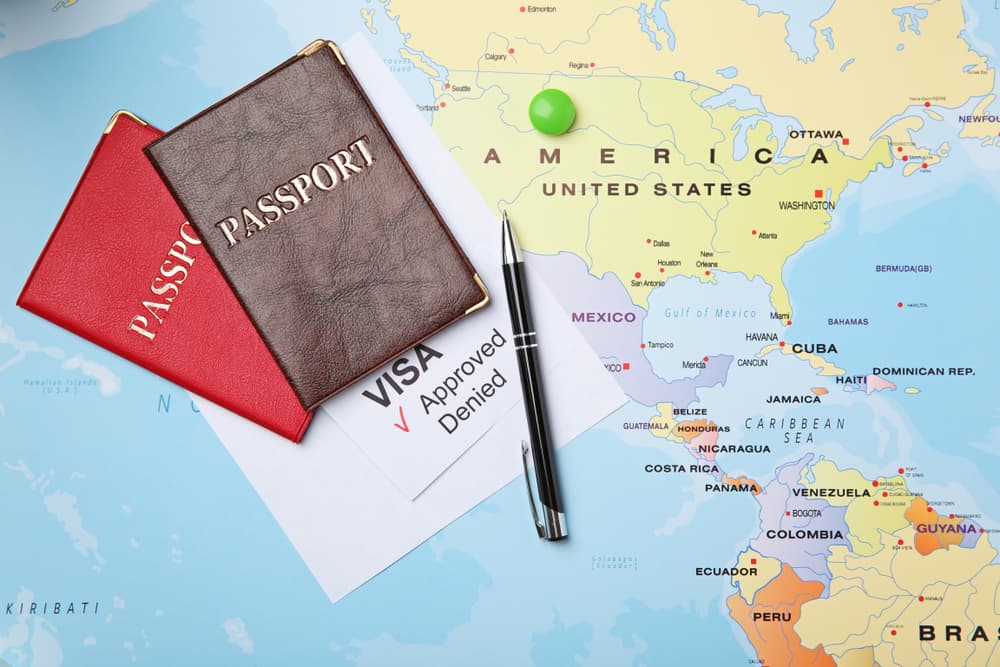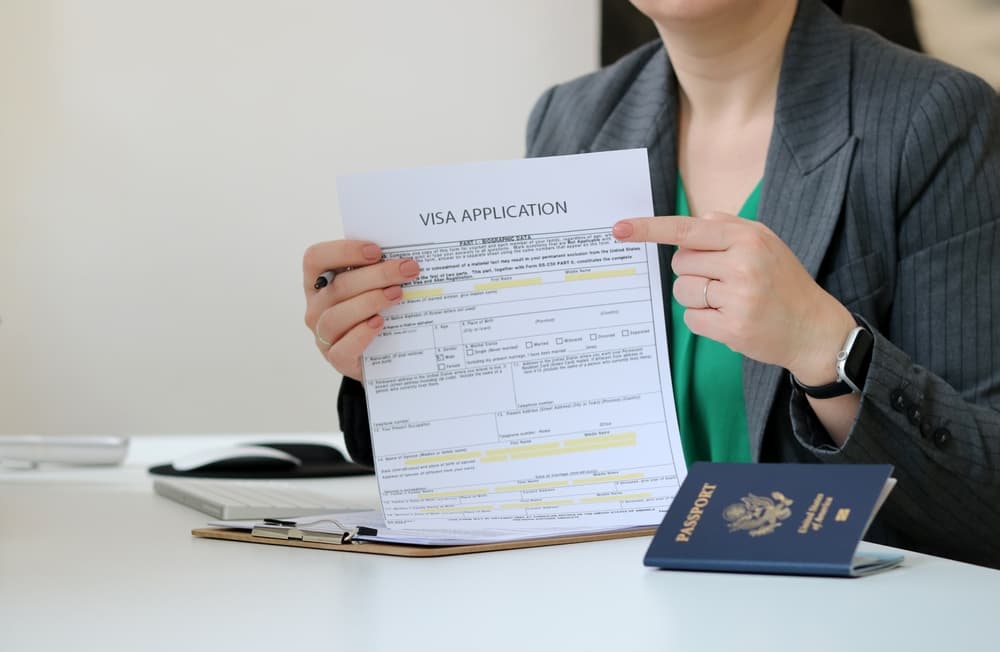A Comprehensive Guide for Vocational Students
M-1 visas are nonimmigrant visas designed for individuals pursuing vocational or non-academic studies in the United States. These visas cater to students enrolled in programs such as technical courses, culinary arts, mechanical training, and other specialized fields.
Navigating the M-1 visa process requires careful attention to detail and following specific regulations. Read on to learn essential information about M-1 visas, including eligibility requirements, application procedures, maintaining status, and how legal assistance can help expedite the process or turn a denial into an acceptance.
For specific advice and guidance for your situation, contact a Texas immigration lawyer near you for a confidential consultation.
What Are M-1 Visas?

M-1 visas allow foreign nationals to enter the U.S. temporarily to engage in full-time vocational or non-academic studies at institutions certified by the Student and Exchange Visitor Program (SEVP). Unlike F-1 visas, which are intended for academic studies, M-1 visas focus on practical, career-oriented training.
Definition and Purpose
The M-1 visa category is specifically for students enrolled in vocational programs that provide hands-on training and skills development. These programs often lead to certificates or diplomas rather than academic degrees.
Distinction Between M-1 and F-1 Visas
While both M-1 and F-1 visas are for students, they serve different educational paths:
- M-1 Visa: For vocational or non-academic programs
- F-1 Visa: For academic programs leading to degrees such as bachelor's or master's
Qualifying Educational Programs
Programs eligible under the M-1 visa include:
- Technical schools
- Culinary institutes
- Mechanical training centers
- Flight schools
- Cosmetology academies
Duration and Limitations
M-1 visa holders are permitted to stay in the U.S. for the duration of their program, plus an additional 30 days to prepare for departure. The maximum stay cannot exceed one year unless an extension is granted under specific circumstances.
Eligibility Requirements for M-1 Visas
To qualify for an M-1 visa, applicants must meet certain criteria related to their educational institution and personal circumstances.
Educational Institution Requirements
The school must be SEVP-certified, ensuring it meets the standards set by the U.S. government for hosting international students.
Student Requirements
Applicants must:
- Enroll as a full-time student in a vocational program
- Demonstrate sufficient financial resources to cover tuition and living expenses
- Maintain a residence abroad with no intent to abandon it
- Possess proficiency in English or enroll in English language courses
Documentation Needed
Applicants should prepare the following documents:
- Form I-20 issued by the SEVP-certified school
- Valid passport
- Proof of financial support
- Academic transcripts and certificates
- Evidence of ties to their home country
Common Eligibility Challenges
Applicants may encounter issues such as insufficient financial documentation or doubts about their intent to return home. In such cases, consulting with an immigration attorney can provide clarity and assistance to strengthen the application.
The M-1 Application Process: Step-by-Step
Applying for an M-1 visa requires completing a series of steps in a specific order. Missing even one part or submitting inaccurate information can delay the process or result in denial. Starting with the right school and following through with precision gives students a solid foundation for entering the U.S. legally to pursue vocational studies.
Acceptance to a Qualified School
Students must first apply to and receive acceptance from a vocational institution that’s certified by the Student and Exchange Visitor Program (SEVP). Once it accepts the student, the school will issue Form I-20, Certificate of Eligibility for Nonimmigrant Student Status, which includes vital information such as the student’s intended course of study, program start and end dates, and estimated costs. Without this document, a student cannot proceed with the visa application.
SEVIS Registration and I-901 Fee Payment
After receiving Form I-20, the next step is registering with the Student and Exchange Visitor Information System (SEVIS). SEVIS tracks nonimmigrant students and the schools they attend. Students must pay the I-901 SEVIS fee online and retain the confirmation for their visa interview. The fee supports ongoing maintenance of the SEVIS system and helps fund immigration enforcement resources related to student visas.
Completing and Submitting the Visa Application (Form DS-160)
The online nonimmigrant visa application, Form DS-160, must be completed accurately. This form gathers information about the applicant’s background, travel plans, education history, and financial resources. After submitting the form, the applicant receives a DS-160 confirmation page with a barcode, which is required for the visa interview. Applicants also need to upload a passport-style photo that meets the U.S. visa photo requirements.
Scheduling the Visa Interview
Next, students must schedule an appointment with the U.S. embassy or consulate in their home country. Visa wait times vary by location, so early scheduling is encouraged.
Attending the Interview
Students should bring the following to the interview:
- Valid passport
- Form I-20
- DS-160 confirmation page
- SEVIS I-901 fee receipt
- Visa appointment confirmation
- Proof of financial support
- Educational records
- Evidence of ties to their home country
During the visa interview, the consular officer evaluates whether the applicant qualifies for the M-1 visa. They assess the student’s intent to study in a vocational program and whether they plan to return to their home country after completing the course.
The interviewing officer may ask questions about the program, the student’s career plans, and how they intend to pay for their studies and living expenses. Consistency in responses and confidence in the purpose of the visit matter during this step. The officer may request additional documentation or clarification. If approved, the visa will be issued and placed in the student’s passport.
Entering the United States
Upon approval, the student may enter the United States up to 30 days before the program start date listed on the Form I-20. At the port of entry, the U.S. Customs and Border Protection (CBP) officer will review the documents and determine whether to admit the individual in M-1 status. It’s essential to carry the passport, visa, and I-20 at the time of entry.
Common Complications and the Role of Legal Counsel

Applicants often run into delays when documents are missing, inconsistent, or incomplete. Financial evidence that doesn't clearly show adequate funds, discrepancies between the application and interview answers, or questions about the applicant’s long-term intentions can all lead to denials or hold-ups.
Legal counsel can help minimize these risks by:
- Reviewing all documents before submission
- Preparing students for the interview with sample questions and coaching
- Identifying and resolving potential red flags early in the process
- Advising on reapplication strategies if a visa is denied
Immigration attorneys also assist when a student changes their mind about programs, faces unexpected financial issues, or needs to request a deferral or extension before arriving.
Maintaining M-1 Status
Once in the U.S., M-1 students must adhere to specific guidelines to maintain their visa status.
- Attendance and Academic Requirements: Students must attend classes regularly and make satisfactory progress in their programs.
- Limitations on Transfer Between Programs: Transferring between schools or programs is restricted and requires prior approval from USCIS.
- Travel Restrictions and Re-entry Procedures: Traveling outside the U.S. during the program requires proper documentation and may necessitate a new visa for re-entry.
Legal Consequences of Status Violations
Failing to comply with visa conditions can result in the termination of status and potential deportation. Legal counsel can assist in resolving such issues and exploring options for reinstatement.
Extension and Change of Status Options
M-1 students may seek extensions or changes to their visa status under certain conditions.
- Limited Extension Possibilities: Extensions are granted for compelling educational or medical reasons and must be applied for at least 15 days before the program’s end date.
- Process for Requesting Authorized Extensions: Obtain a new Form I-20 from your DSO and file Form I-539 with USCIS, including all supporting documents.
- Change of Status Possibilities: Changing to another nonimmigrant status, such as H-1B, may be possible after program completion. However, transitioning to F-1 status is generally not permitted.
An immigration attorney can evaluate your situation and advise on viable options for extending your stay or changing your status.
Common M-1 Visa Challenges and Solutions
Applicants and students may encounter various challenges during their M-1 visa journey.
- Visa Denials and Appropriate Responses: Denials can occur due to incomplete applications or insufficient evidence. Reviewing the reasons for denial and reapplying with corrected information can improve chances of approval.
- Documentation Issues: Missing or incorrect documents can delay processing. You must ensure all paperwork is accurate and complete.
- Status Violations and Remediation Options: Violations like unauthorized employment can jeopardize your status. Legal guidance can help you address these violations and seek reinstatement if applicable.
- Appeals Processes for Adverse Decisions: If your application is denied, you may have the option to appeal the decision. An attorney can assist in preparing a strong appeal.
Having legal support can provide clarity, ensure compliance with regulations, and improve the likelihood of a successful outcome.
Post-Program Options for M-1 Students
After completing their vocational programs, M-1 students have limited options for remaining in the U.S.
- Grace Period Limitations: Students have a 30-day grace period to prepare for departure from the U.S.
- Limited Practical Training Opportunities: M-1 visa holders may be eligible for practical training related to their field of study, but this is limited and must be authorized.
- Return Requirements and Compliance: Failure to depart the U.S. within the grace period can result in future visa ineligibility.
- Long-Term Planning With Legal Guidance: An immigration attorney can explore options for future immigration opportunities, such as permanent residency.
How Bailey & Galyen Can Help
Personalized Assessment of Individual Situations
Our attorneys evaluate your unique circumstances to provide tailored advice and solutions.
Comprehensive Application Preparation and Review
We assist in preparing and reviewing all necessary documentation to ensure accuracy and completeness.
Representation During Government Interactions and Interviews
Our team represents you during interactions with immigration authorities, providing guidance and support.
Assistance With Status Issues, Extensions, and Changes
We help address any status-related issues and guide you through extension or change of status processes.
Strategic Planning for Long-Term Immigration Goals
Our attorneys work with you to develop a plan that aligns with your long-term immigration objectives.
Track Record of Successful M-1 Visa Cases
Bailey & Galyen’s immigration attorneys have assisted numerous students in securing M-1 visas, addressing status concerns, and exploring future opportunities in the U.S. Our history of successful outcomes reflects a strong commitment to serving the needs of international students seeking vocational training. Whether you’re just beginning your application or confronting unexpected hurdles, we provide reliable legal support every step of the way.
Take the First Step Toward Your Vocational Future

Delays or missteps in the M-1 visa process can put your educational plans on hold. Acting quickly and precisely makes a meaningful difference, especially when program start dates or legal deadlines approach. If you're preparing to study at a vocational school in the U.S. and dealing with a visa issue, the immigration attorneys at Bailey & Galyen are here to help.
Our team brings extensive experience in M-1 visa matters. We understand the regulations and procedures, and we stay current with evolving immigration policies that affect students like you.
We treat every client with the personal attention and care they deserve. When you work with Bailey & Galyen, you don’t receive a one-size-fits-all solution. Instead, you get a plan that reflects your academic goals, financial situation, and long-term interests.
Whether you’re looking to study culinary arts, aircraft maintenance, automotive repair, or another trade, we’ll help you pursue your educational journey with confidence.
Contact Our Experienced M-1 Visa Attorneys in Texas Today
Schedule a confidential consultation today with a Texas-based immigration lawyer at Bailey & Galyen. Let us help you move forward with your M-1 visa and build the foundation for a successful career through vocational training in the United States. Call us now at 817-345-0580 or fill out our online contact form to get started.